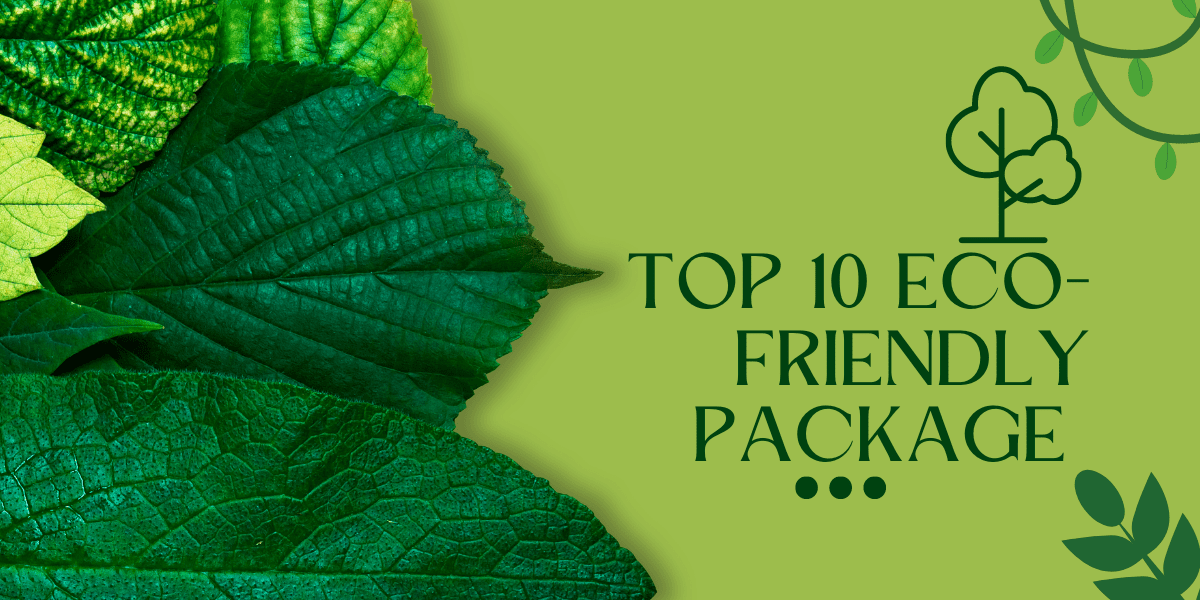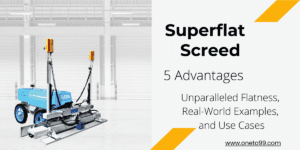Table of Contents
Eco-friendly packaging materials are becoming more popular in India as businesses and consumers prioritize sustainability. Here are ten 100% eco-friendly packaging products available in India:
Innovative Biodegradable Materials: Revolutionising the Packaging Industry
- Bagasse Packaging: Made from sugarcane fibers, bagasse packaging is biodegradable and compostable. It can be used to package food items, including takeaway containers and disposable plates.
- Cornstarch Packaging: Derived from corn, this bioplastic is compostable and suitable for food packaging, such as disposable cutlery, plates, and cups.
- Jute Bags: Durable and reusable, jute bags are an excellent eco-friendly alternative to plastic bags for shopping and product packaging.
- Areca Leaf Plates: Made from fallen areca palm leaves, these plates are biodegradable, compostable, and suitable for food packaging.
- Paper Bags: Recyclable and biodegradable, paper bags are a versatile packaging option for various products, from groceries to gifts.
- Cotton Bags: Reusable and washable, cotton bags are a sustainable choice for packaging, shopping, or promotional items.
- Recycled Cardboard Boxes: Made from recycled materials, these cardboard boxes are reusable, recyclable, and suitable for shipping and packaging various products.
- Seed Paper: Embedded with seeds, this paper can be planted after use to grow flowers or herbs. It’s an eco-friendly option for packaging, invitations, or promotional materials.
- Bamboo Packaging: Bamboo is a fast-growing, sustainable resource that can be used to create packaging for cosmetics, food, and other products.
- Mushroom Packaging: Made from agricultural waste and mycelium, this innovative packaging material is biodegradable and compostable, making it an eco-friendly alternative to traditional packaging materials like styrofoam.
These options help reduce the environmental impact of packaging while promoting sustainable practices in India.
From Waste to Packaging: Harnessing the Power of Recycling and Upcycling
While these eco-friendly packaging options are available in India, it’s essential to consider factors like availability, cost, and the specific requirements of the product being packaged when selecting the most suitable material.
Bagasse Packaging:
Raw Material: Bagasse is the fibrous pulp that remains after sugarcane stalks are crushed to extract their juice. It is a byproduct of the sugar production process.
Steps to create Bagasse Packaging:
a. Collection: After the sugarcane juice is extracted, the remaining bagasse is collected and transported to the manufacturing facility.
b. Washing and Cleaning: The bagasse is washed and cleaned to remove any impurities, like dirt or chemicals.
c. Pulping: The cleaned bagasse is then pulped by adding water and breaking it down into fibers using a pulping machine.
d. Formation: The pulp is spread onto a mold, and the water is drained to create a thin, even layer of bagasse fibers.
e. Pressing and Drying: The wet bagasse sheets are pressed to remove any remaining water and then dried, either by air or using heat.
f. Cutting and Shaping: The dried sheets are cut and shaped into the desired packaging products, such as containers, plates, or bowls.
g. Finishing: The final products may be coated with a thin layer of food-safe, biodegradable material to enhance moisture resistance and durability.
Cornstarch Packaging:
Raw Material: Cornstarch is derived from corn, a widely grown and renewable resource. It is used to produce biodegradable and compostable plastics, known as polylactic acid (PLA).
Steps to create Cornstarch Packaging:
a. Harvesting: Corn is harvested, and the kernels are separated from the cob.
b. Milling: The kernels are milled to produce cornstarch, which is then purified and dried.
c. Fermentation: Cornstarch is mixed with water and specific enzymes that break it down into simple sugars (dextrose). Then, it undergoes fermentation using lactic acid bacteria, producing lactic acid.
d. Polymerization: The lactic acid is converted into lactide monomers through a chemical process. These monomers are then polymerized to create PLA, a biodegradable plastic.
e. Extrusion: The PLA is melted and extruded into thin sheets or pellets, depending on the desired end product.
f. Molding: The PLA sheets or pellets are processed using various molding techniques, such as injection molding, blow molding, or thermoforming, to create the final packaging products, like cutlery, cups, or containers.
g. Cooling and Finishing: The molded products are cooled, trimmed, and finished as needed before being packaged for distribution.
Both Bagasse and Cornstarch Packaging contribute to eco-friendly and sustainable packaging solutions by utilizing renewable resources and producing biodegradable and compostable end products.
Jute Bags:
Raw Material: Jute is a natural, long, soft, and shiny vegetable fiber derived from the Corchorus plant, which is primarily grown in India and Bangladesh.
Steps to create Jute Bags:
a. Harvesting: Jute plants are harvested, typically when they are around 120 days old.
b. Retting: The harvested plants are soaked in water for 10-30 days to soften and separate the fibers from the stem.
c. Stripping: The softened stems are stripped to extract the jute fibers.
d. Washing and Drying: The jute fibers are washed to remove any impurities and then sun-dried.
e. Carding and Spinning: The dried jute fibers are carded to untangle and align them. They are then spun into yarn or thread using spinning machines.
f. Weaving: The jute yarn is woven into fabric using handlooms or power looms.
g. Cutting and Stitching: The jute fabric is cut into the desired bag shape and size, and the edges are stitched together to form the bag.
h. Printing and Finishing: The bags can be screen-printed or embroidered with designs, logos, or patterns. Finally, handles are attached, and any other finishing touches, such as zippers or pockets, are added.
Areca Leaf Plates:
Raw Material: Areca leaf plates are made from fallen areca palm leaves, which are naturally shed by the tree.
Steps to create Areca Leaf Plates:
a. Collection: Fallen areca palm leaves are collected from the ground, typically in regions where areca palms are cultivated.
b. Cleaning: The leaves are washed and cleaned to remove any dirt or debris.
c. Sterilization: The cleaned leaves are sterilized using heat or steam to ensure they are hygienic and safe for food contact.
d. Drying: The sterilized leaves are sun-dried or mechanically dried to remove any remaining moisture.
e. Pressing: The dried leaves are placed in a hydraulic press with a mold in the desired plate shape and size. The press applies heat and pressure to the leaves, which softens the natural fibers and forms the plate.
f. Trimming: The pressed plates are trimmed to remove any excess material and ensure a clean edge.
g. Quality Control and Packaging: The finished plates are checked for quality and defects before being packaged for distribution.
Recycled Cardboard Boxes:
Raw Material: Recycled cardboard boxes are made from a mix of post-consumer waste (old corrugated containers, newspapers, and other paper products) and post-industrial waste (paper scraps and trimmings from manufacturing facilities).
Steps to create Recycled Cardboard Boxes:
a. Collection: Post-consumer and post-industrial waste materials are collected and transported to the recycling facility.
b. Sorting: The collected paper waste is sorted and separated based on the type and quality of the paper.
c. Pulping: The sorted paper waste is mixed with water and chemicals to create a pulp. The pulp is then cleaned, screened, and refined to remove impurities and contaminants.
d. Forming: The cleaned pulp is spread onto a forming table or machine, where water is drained, and the fibers bond together to create a continuous sheet of paper.
e. Drying: The wet paper sheet is passed through heated rollers or dryers to remove any remaining moisture.
f. Corrugating: For corrugated cardboard, a sheet of paper is passed through a corrugating machine to create a wavy, fluted layer. This layer is then sandwiched between two flat layers of paper using a starch-based adhesive.
g. Cutting and Folding: The flat or corrugated cardboard sheets are cut, scored, and folded into the desired box shape and size.
h. Printing and Finishing: The boxes can be printed with designs, logos, or labels using various printing techniques. Lastly, any additional finishing touches, such as handles or closures, are added.
Seed Paper:
Raw Material: Seed paper is made from a mix of post-consumer waste paper and seeds. The seeds can be a variety of flowers, herbs, or vegetables.
Steps to create Seed Paper:
a. Collection: Post-consumer paper waste is collected and transported to the manufacturing facility.
b. Pulping: The paper waste is shredded and mixed with water to create a pulp. The pulp is then cleaned and refined to remove impurities.
c. Mixing Seeds: The seeds are carefully mixed into the pulp, ensuring even distribution.
d. Formation: The pulp with seeds is spread onto a mold or screen, and the water is drained, forming a thin layer of paper.
e. Drying: The wet seed paper is air-dried or pressed between absorbent materials to remove any remaining moisture. It is crucial to dry the paper at a temperature that doesn’t harm the seeds.
f. Cutting: The dried seed paper is cut into the desired size and shape for various uses, such as invitations, packaging, or promotional materials.
Both Recycled Cardboard Boxes and Seed Paper contribute to a more sustainable and eco-friendly future by utilizing post-consumer waste materials and promoting recycling and upcycling practices.
Bamboo Packaging:
Raw Material: Bamboo is a fast-growing, renewable, and sustainable resource that can be used to create various packaging materials.
Steps to create Bamboo Packaging:
a. Harvesting: Mature bamboo culms are harvested, typically within 3-5 years of growth.
b. Processing: The harvested bamboo is cut into smaller pieces, and the outer skin is removed. The bamboo is then boiled to remove any insects, fungi, or starches that may attract pests.
c. Pulping: The cleaned bamboo is mechanically or chemically pulped to create a bamboo fiber pulp.
d. Formation: The bamboo pulp is spread onto a mold or screen, where water is drained, and the fibers bond together to create a continuous sheet of bamboo paper or material.
e. Drying: The wet bamboo sheet is passed through heated rollers or dryers to remove any remaining moisture.
f. Cutting and Shaping: The dried bamboo sheets are cut and shaped into the desired packaging products, such as containers, tubes, or boxes.
g. Finishing: The final products may be coated with a thin layer of food-safe, biodegradable material to enhance moisture resistance and durability. Additionally, printing or branding can be applied as needed.
Mushroom Packaging:
Raw Material: Mushroom packaging is made from agricultural waste (like corn stalks, wheat straw, or wood chips) and mycelium, the root-like structure of fungi.
Steps to create Mushroom Packaging:
a. Collection: Agricultural waste materials are collected from farms and processing facilities.
b. Sterilization: The collected waste materials are sterilized using heat or steam to ensure they are free of any contaminants or competing organisms.
c. Inoculation: The sterilized agricultural waste is mixed with mycelium spawn (mushroom spores), and the mixture is spread into custom molds in the desired shape and size of the packaging.
d. Incubation: The inoculated molds are placed in a temperature and humidity-controlled environment, allowing the mycelium to grow and consume the agricultural waste. This process typically takes 5-7 days.
e. Drying: Once the mycelium has fully colonized the agricultural waste, the formed packaging is removed from the molds and dried at a high temperature to stop mycelium growth and remove any residual moisture.
f. Finishing: The final mushroom packaging products are trimmed, if necessary, to create clean edges and uniform shapes. They can also be customized with printing or branding, if desired.
Both Bamboo Packaging and Mushroom Packaging are innovative, eco-friendly alternatives to traditional packaging materials like plastic and styrofoam. They utilize renewable resources and produce biodegradable and compostable end products, contributing to a more sustainable future.
Paper Bags:
Raw Material: Paper bags can be made from virgin paper pulp (wood fibers) or recycled paper, depending on the desired strength, quality, and sustainability goals.
Steps to create Paper Bags:
a. Pulping: If using virgin pulp, wood chips are mixed with water and chemicals to create a pulp. If using recycled paper, collected paper waste is mixed with water to create a pulp. The pulp is then cleaned and refined to remove impurities.
b. Formation: The cleaned pulp is spread onto a paper machine, where water is drained, and the fibers bond together to create a continuous sheet of paper.
c. Drying: The wet paper sheet is passed through heated rollers or dryers to remove any remaining moisture.
d. Reeling and Cutting: The dried paper is wound into large rolls and then cut into sheets of the desired size for bag production.
e. Bag Making: The paper sheets are folded, cut, and glued using a paper bag-making machine, which forms the desired bag shape and size. Handles can be made from paper or other materials, such as cotton or jute, and attached during this process.
f. Printing and Finishing: The bags can be printed with designs, logos, or labels using various printing techniques. Finally, any additional finishing touches, such as laminations or coatings, are added as needed.
Cotton Bags:
Raw Material: Cotton bags are made from cotton fibers, which are derived from the cotton plant. Cotton can be grown organically, which reduces the environmental impact of pesticide use.
Steps to create Cotton Bags:
a. Harvesting: Cotton plants are harvested, and the cotton fibers are separated from the seeds using a process called ginning.
b. Carding and Spinning: The separated cotton fibers are carded to untangle and align them. They are then spun into yarn or thread using spinning machines.
c. Weaving or Knitting: The cotton yarn is woven or knitted into fabric using looms or knitting machines.
d. Cutting and Stitching: The cotton fabric is cut into the desired bag shape and size, and the edges are stitched together to form the bag.
e. Printing and Finishing: The bags can be screen-printed, embroidered, or dyed with designs, logos, or patterns. Finally, handles are attached, and any other finishing touches, such as zippers, pockets, or closures, are added.
Paper Bags and Cotton Bags offer sustainable alternatives to plastic bags for shopping, packaging, or promotional purposes. They promote the use of renewable resources and can be recycled, composted, or reused, reducing environmental impact and waste.
Government Initiatives and Subsidies: Boosting Green Entrepreneurship in India
Here is a summary of the minimum and maximum investment required, necessary approvals, and available government subsidies for starting an eco-friendly packaging business in India for each product discussed earlier. Note that the figures provided are approximate and may vary depending on various factors such as location, scale, and technology.
Bagasse Packaging:
Minimum Investment: ₹10-15 lakhs
Maximum Investment: ₹50-70 lakhs
Approvals: Pollution Control Board, GST registration, FSSAI license (if producing food packaging), MSME registration
Government Subsidies: Potential subsidies under MSME schemes
Cornstarch Packaging:
Minimum Investment: ₹15-20 lakhs
Maximum Investment: ₹60-80 lakhs
Approvals: Pollution Control Board, GST registration, FSSAI license (if producing food packaging), MSME registration
Government Subsidies: Potential subsidies under MSME schemes
Jute Bags:
Minimum Investment: ₹5-10 lakhs
Maximum Investment: ₹30-40 lakhs
Approvals: GST registration, MSME registration, Textile Committee registration (for export)
Government Subsidies: Potential subsidies under MSME schemes and National Jute Board schemes
Areca Leaf Plates:
Minimum Investment: ₹3-5 lakhs
Maximum Investment: ₹15-20 lakhs
Approvals: GST registration, FSSAI license (if producing food packaging), MSME registration
Government Subsidies: Potential subsidies under MSME schemes
Recycled Cardboard Boxes:
Minimum Investment: ₹10-15 lakhs
Maximum Investment: ₹50-70 lakhs
Approvals: Pollution Control Board, GST registration, MSME registration
Government Subsidies: Potential subsidies under MSME schemes
Seed Paper:
Minimum Investment: ₹2-4 lakhs
Maximum Investment: ₹10-15 lakhs
Approvals: GST registration, MSME registration
Government Subsidies: Potential subsidies under MSME schemes
Bamboo Packaging:
Minimum Investment: ₹10-15 lakhs
Maximum Investment: ₹40-60 lakhs
Approvals: Pollution Control Board, GST registration, FSSAI license (if producing food packaging), MSME registration
Government Subsidies: Potential subsidies under MSME schemes
Mushroom Packaging:
Minimum Investment: ₹10-15 lakhs
Maximum Investment: ₹40-50 lakhs
Approvals: Pollution Control Board, GST registration, MSME registration
Government Subsidies: Potential subsidies under MSME schemes
Paper Bags:
Minimum Investment: ₹5-10 lakhs
Maximum Investment: ₹30-40 lakhs
Approvals: Pollution Control Board, GST registration, MSME registration
Government Subsidies: Potential subsidies under MSME schemes
Cotton Bags:
Minimum Investment: ₹3-5 lakhs
Maximum Investment: ₹15-25 lakhs
Approvals: GST registration, MSME registration
Government Subsidies: Potential subsidies under MSME schemes
Please keep in mind that these figures are approximate and may vary depending on your specific situation, location, and scale of operation. It is essential to conduct thorough market research and consult with professionals to determine accurate costs and requirements. Additionally, subsidies and support programs are subject to change; it is advisable to consult with government agencies and departments to obtain the most up-to-date information.





